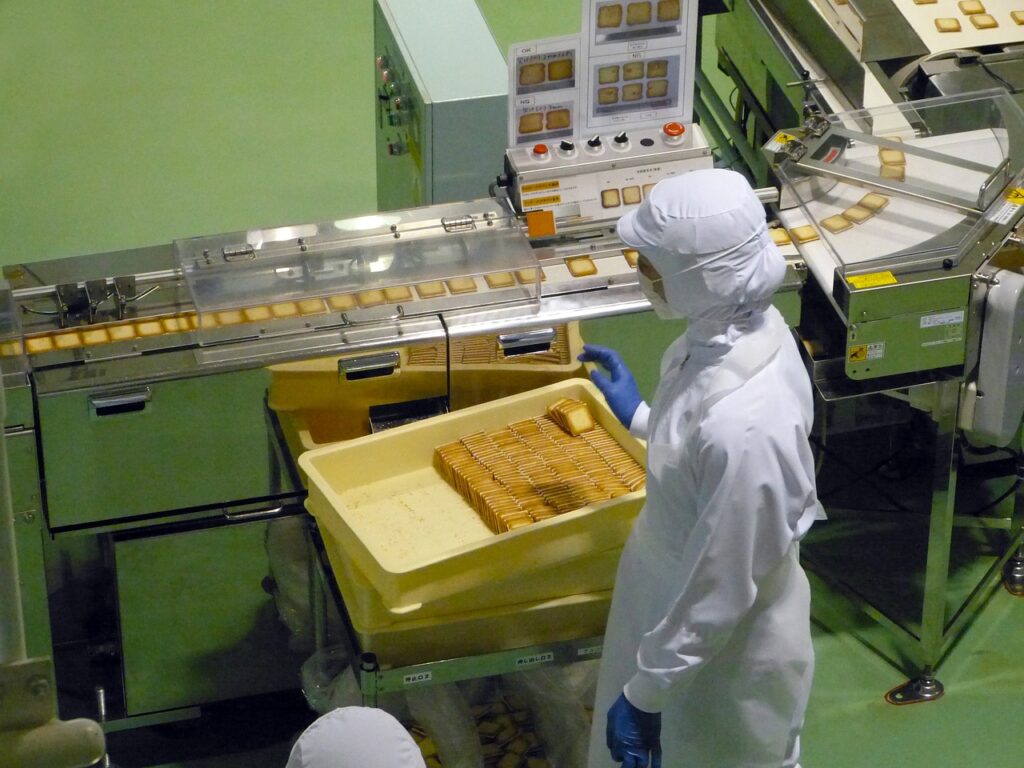Harshvardhan Singh works as a Senior Service Engineer at a mining firm in India. He is currently working into oil analysis field. Has worked in the filed of tribology and lubrication and loves to write about the same.
Food Grade Lubricants
Table of Contents
Why to use food grade lubricants?
The food processing industry relies on food grade lubricants and like any other industries has seen challenging times. With retailers constantly squeezing down prices to become highly competitive, growing raw material costs, increasing utility charges and labor shortage have made the demand for automation more prevalent in recent times. According to the Robotic Industries Association and Association for Advancing Automation, orders of robotic systems by food and consumer goods manufacturers grew by 56% in 2020 [1]. Automation have several advantages [2]:
- Replicating the appearance
- Quality control
- Waste reduction
- Increased flexibility and adaptability
- End-to-end traceability
- Boost in efficiency
A variety of different machinery including automated ovens, cutting and forming machines, sortation equipment, mixers and blending machines, filling equipment, wrapping equipment can be seen in action at a modern-day automated food processing plant.
Where these is mechanization involved, lubricants have to be utilized to keep the process smooth and flawless. But not just any lubricant can do the job in food industry, the lubricant has to be a food grade lubricant.
The Need
According to a study by the Food Marketing Institute and the Grocery Manufacturers Association (GMA) in the US, food recalls cost companies an average of $10 million in direct costs alone. A separate GMA sponsored survey found 5% of companies incurred over $100m in direct and indirect costs [3]. According to Amy Philpott, vice president at Watson Green, from product losses to brand damage, the dollar amounts can rack up quickly when faced with a recall [4]. The brand reputation also suffers a major impact of recall.
One of the rare causes of food recall can be contamination of food product from lubricant being used to lubricate food processing machinery. The below page shows some of the major recalls that took place due to lubricant contamination.

In response, few knowledgeable lubricant manufacturers have developed a complete line of food-grade lubricants that meet USDA and FDA requirements and the demanding performance requirements of the food processing industry.
What are Food Grade Lubricants?
Food grade lubricants are similar to industrial lubricants and have similar functions like lubricating, cooling, sealing, cleaning, transmit power, dampening and minimize oxidation and corrosion. Apart from above mentioned functions, they should meet some additional requirements like [5]
- Should have no smell
- Should have no taste
- Should have no color
- Physiologically inert
Involvement of government agencies
The U.S. Department of Agriculture (USDA) and the U.S. Food and Drug Administration (FDA) were the two government agencies involved in food processing. Prior to 1998, USDA looked after approval and compliance of food-grade lubricants. [6] [7]
To gain USDA approval, lubricant manufacturers had to prove that all of the ingredients in the formulation were allowable substances in accordance with the Guidelines of Security Code of Federal Regulations (CFR) Title 21, §178.3570. The body of law that governs all food safety-related matters is the Code of Federal Regulations (CFR). This code states that plant managers must be diligent in maintaining records on lubricants used in manufacturing, and it also lays out regulations for the storage and handling of these lubricants. The CFR also dictates substances for incidental contact and the limitations for their use. Currently, in the United States as well as in other countries, the National Sanitation Foundation (NSF) manages a lubricant evaluation program that essentially mirrors the USDA plan. [6][7]
Types of food grade lubricants
Learning about various food grade lubrication classifications – H1, H2, and H3 will support the owner in meeting the regulations/compliance and will provide optimal safety for consumers when unavoidable contact through leakage or contamination occurs [8].

Safety tips for avoiding food contamination from lubricants
Certain precautions can help the industry protect their food items from getting contaminated from lubricants [9]
- A proper planned lubrication schedule.
- Only the minimum quantity necessary to achieve the desired technical effect should be used.
- A skilled and competent person responsible and allowed to lubricate.
- All lubrication points in equipment should be properly marked to indicate which food-grade lubricant should be used.
References
- Automation Trends in Food Processing and Packaging: Robotics
- 7 benefits of automation in the food and beverage industry
- Rise in Food Recalls is a Costly Business
- How Much Does a Food Recall Really Cost?
- Food grade lubricants, https://wiki.anton-paar.com/in-en/food-grade-lubricants/
- The Basics of Food-grade Lubricants, https://www.machinerylubrication.com/Read/1857/food-grade-lubricants-basics
- What is a food-grade lubricant , https://interflon.com/us/news/what-is-a-food-grade-lubricant
- Food grade lubricants – are they environmentally friendly and biodegradable?
- Production and Use of Food-Grade Lubricants
- Kim, HJ., Kim, DE. Water Lubrication of Stainless Steel using Reduced Graphene Oxide Coating. Sci Rep 5, 17034 (2015). https://doi.org/10.1038/srep17034



Be the first to comment